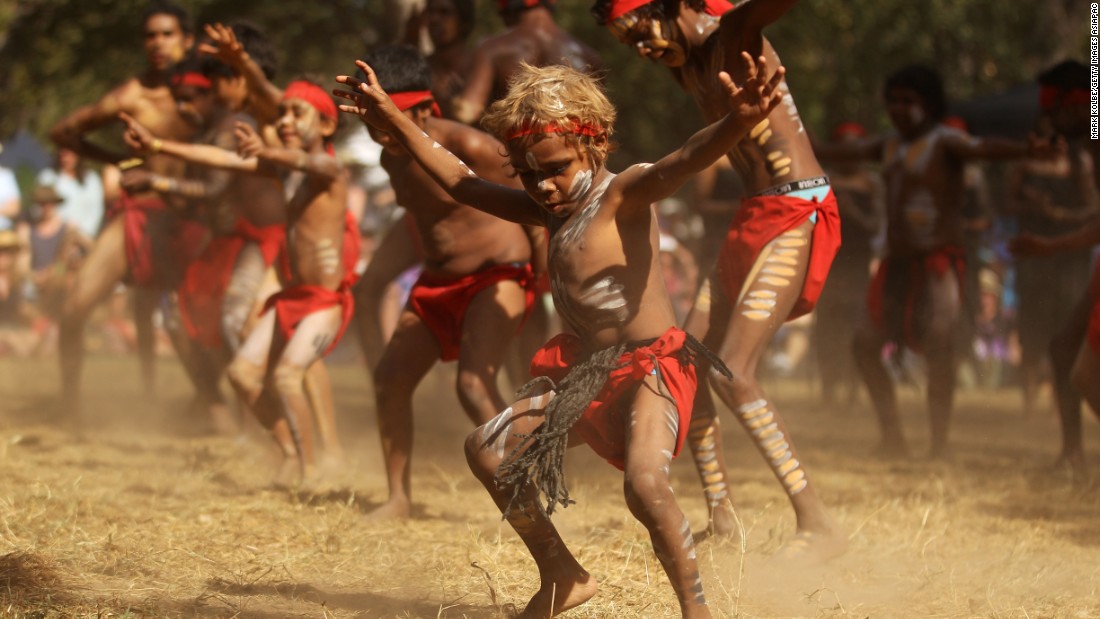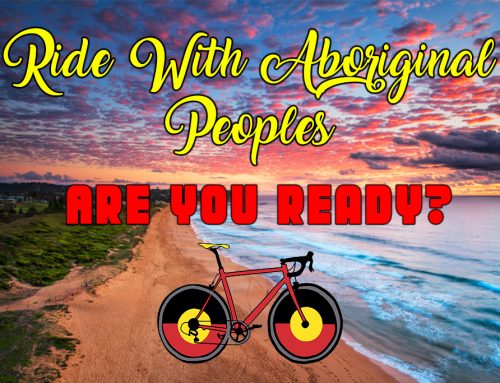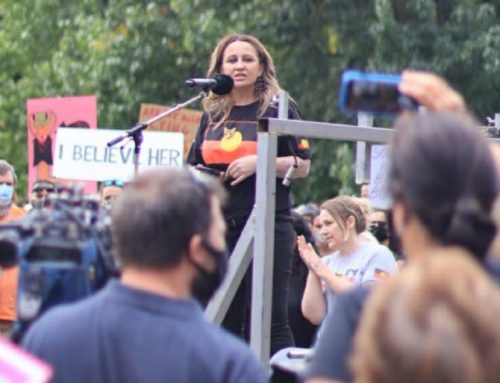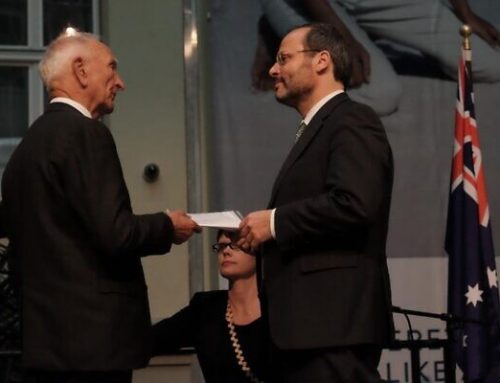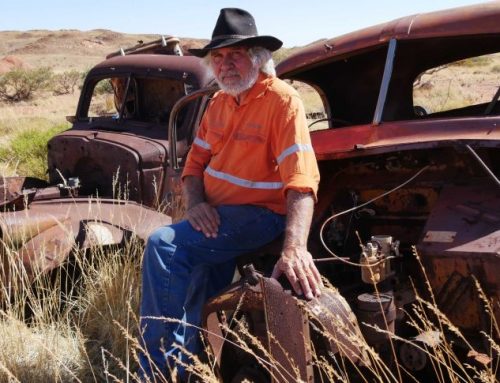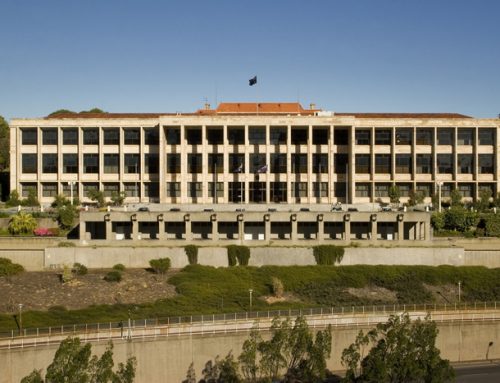The following article appeared in the March 2002 edition of Sydney’s Child magazine. Robin Grille has kindly given permission for the ASG-MWP to re-publish his article.
Reconciliation – Why Should I Care?
by Robin Grille
When I went to school, I was taught next to nothing about Aboriginal cultures, and how colonisation affected them. Living in Sydney, it wasn’t until my late twenties that I met an Aboriginal person for the first time.
I grew up in a country whose history of black-white relations seemed a carefully-guarded secret. Most Aussie kids in my time could rattle off the names of at least half a dozen Native-American nations, but could not name a single Aboriginal tribe (how many of each can you name today?). We should not be surprised at the colossal ignorance and disinterest displayed among Australian adults today. In these more enlightened days, however, the themes of Reconciliation are presented in schools.
Recently, when confronted with complicated questions by children from my family and neighbourhood, I found myself stumped for answers. My heart embraces reconciliation, but my mind was vague for lack of information. Embarrassed at my own ignorance, and wanting to feel a more complete citizen, I did some reading, and made some effort to articulate my feelings about the Reconciliation issue. I hope I’ll now be better prepared for when my own daughter starts asking questions. In the meantime, I wish to share what I’ve came up with so far. What follows are some thoughts on how I might address some oft-heard objections, and answer some of the questions more commonly asked.
Q1: Why should I be sorry for the wrongs done to Aborigines? I wasn’t there when it happened!
By world standards, the average Australian enjoys one of the highest standards-of-living. We wouldn’t be so wealthy today, if it weren’t for the land and resources which were violently taken from their original custodians. We owe much of our exceptional lifestyle to the Aboriginals’ dispossession. Even though most of us alive today didn’t ‘fight the battle’, we still get the ‘spoils’.
Q2: Most peoples, including the Aborigines, fought others over resources and land – since the dawn of time. Why should we be apologetic?
We could also say: ‘most teenagers abuse drugs or alcohol at one time or another, most Australians eat heaps of junk-food, most people watch too much crap on TV, and many people still throw cigarette-butts on the ground. Do we have the guts to stop hiding behind what ‘most people’ have done? Many Australians are making an effort to renounce violence and racism, so we can help to build a kinder world. Saying ‘sorry’ for past and present injustice is part of that effort.
Q3: But no other nation has said ‘sorry’ for its hostilities, have they?
Certainly, national remorse is almost unknown in human history. But Australia won’t be the first to say ‘sorry’. The Canadian government recently returned enormous tracts of land to their once dispossessed Inuit people (we used to call them Eskimos). After World War II, the German government issued a wholehearted apology to the Jews of the world. They accepted full responsibility for the ‘Holocaust’, and have been compensating survivors ever since. Only weeks ago, President Kwasniewski of Poland apologised, on behalf of his country, for the 1941 massacre of 1600 Jews in the village of Jedwabne. He set an honourable example with his words: ‘For this crime, we should beg the souls of the dead and their families for forgiveness.’
All Australian State governments (not the Northern Territory) have now issued formal apologies to their Aboriginal communities. Hundreds of thousands of Australians marched in Melbourne and Sydney, as an overwhelming demonstration of the public’s readiness to say ‘sorry’. Only our Federal Govt is holding back. As the rest of the world becomes more civilised , we risk being left behind.
Q4: Why should the whole country pay for the sins of a few ratbags? Surely it wasn’t government policy to hurt Aborigines?
Far from being isolated incidents conducted secretly by outlaws, massacres of Aborigines were routine on the Australian frontier. There were several well-organised campaigns designed to destroy entire tribal groups, and neither women nor children were spared. Many of the massacres were accompanied by torture, rape and humiliation. Some were carried out sporadically by settlers, others were methodically executed by government troops, and the ‘Native Police’ under Governors’ orders. At one time, Gov. Lachlan Macquarie ordered that Aboriginal corpses be hung from trees to spread terror among tribesmen who were trying to defend their territories.
Some government officials tried to put on a show of restraint, but the reprimands against perpetrators were usually feeble and ineffectual. Only once, in 1838, following the infamous ‘Myall Creek Massacre’ in NSW, were perpetrators ever convicted of murder. The killers had systematically pursued and slain a large group of Kwiambal people, and decapitated their babies and children. One woman left alive to watch the slaughter was subsequently gang-raped. Despite the callousness of these murders, there was widespread public outrage against the trial, as almost no Australians believed Aboriginals deserved to be treated as humans under the law. Public committees were formed to raise money to defend the prisoners.
Van Diemen’s Land (colonial Tasmania) was host to unparalleled carnage, which was carried out with little government interference, and often with government encouragement. The list of atrocities against Tasmanian Aborigines is as long as it is grotesque: countless Aborigines were shot for sport, burned alive, flogged, raped, and mutilated. There are a number of accounts of captives being forced to eat their own body parts. The killings in this colony had explicit military support. Martial law allowed anyone with a horse and rifle to shoot Aborigines down. The government put a price on Aboriginal heads, and some, like John Batman, made personal fortunes in this way. Sealers were particularly notorious for abducting Aboriginal women to use as sex slaves. In captivity, these women were subject to the most unspeakable tortures when they displeased their masters. With and without government support, Tasmanian Aborigines were almost entirely wiped out.
Some people still believe that most Aboriginal nations were destroyed by the accident of disease. Although it’s true that western diseases such as influenza and smallpox decimated entire groups, many were deliberately infected. Settlers commonly believed that one could cure syphilis through sex with a virgin, or at least alleviate symptoms by passing the disease to another. Aboriginal women were habitually used for this purpose, and this made syphilis, the biggest of all killers, a kind of murder-by-rape. Another common practice was to give Aborigines ‘gifts’ of poisoned flour, or blankets infected with the smallpox virus – with predictable results.
Massacres by non-indigenous Australians were still carried out, unpunished, during our grandparents’ (and for some of us, our parents’) lifetimes. In the Western Australian ‘Forrest River Massacre’ of 1926, several men were killed and cremated while their women were forced to watch. Public opinion proved too strong an obstacle against an inquiry that would bring the killers to trial. Two years later in the Northern Territory, Aboriginal men, women and children were indiscriminately shot in what was to be called the ‘Coniston Massacre’. An Adelaide newspaper called one of the ringleaders – a bloke by the name of ‘Murray’ – the ‘Hero of Central Australia’. Walbiri tribesmen claim almost one hundred dead. After court hearings, Murray was quietly removed to a distant location, where he died in the 1960’s of old age. A lone survivor named ‘Bullfrog’ was still alive in the 1970’s.
Similarly, when children of mixed Aboriginal and non-indigenous descent were systematically taken from their families, this was not carried out covertly, or by maverick bureaucrats. This practice was fully backed by government policy, enabled by over 700 pieces of legislation around Australia for its duration – between 1910 and 1970.
Q5: Isn’t the ‘Stolen Generation’ a pile of exaggeration and propaganda? All they want is compensation money!
The ‘Stolen Generation’ is not propaganda. It really happened. The most conservative estimates state that between 1910 and 1970, 20,000 to 25,000 children were wrongfully taken from their families. Most were physically or sexually abused, forced into servitude and subjected to appalling cruelty and neglect. All had their ties to culture and language severed, and their true identities destroyed. We will never be able to calculate the ‘ripple’ effects that their trauma would have on their own children and grandchildren. Systematic child removal is now included in the UN Convention on Genocide – it is classified as a genocidal act. It has been recognised as a method for eradicating ethnic groups.
Financial reparations would in fact be a good start to the healing process; it would be a legitimate way to help victims to deal with the incalculable physical and psychological damage wrought by the forcible splintering of families. It might also help victims and their children to reconnect with their past wherever possible. It benefits all of us to live in a society where we can each feel safe that all victims, once acknowledged, will be compensated. The idea that the responsible party must compensate the injured, is absolutely central to the sense that we live in a just society. Without this, anyone is fair game for being exploited or trampled on. In this case, the responsible party is the institution of the Australian Government.
Q6: The authorities that removed Aboriginal children really meant well, and we shouldn’t judge them. Wasn’t it in the children’s best interests to be taken away from ‘drunken’ and ‘dysfunctional’ parents?
In some cases, the intention may have been to remove children for their own protection. However, regarding the overall practice of child removal, no, the authorities did not ‘mean well’. The policy of forcible child-removal explicitly applied only to children of mixed descent. That demonstrates that this policy was not motivated by welfare concerns. In fact, as of 1915, the Aboriginal Protection Board received the legal power to separate Aboriginal children from their parents without having to prove neglect before a court.
In 1911, the Northern Territory’s Acting Administrator, Samuel James Mitchell, said: ‘one of the first works to be undertaken is to gather in all the half-caste children who are living with Aborigines.’ Dr Cecil Cook, Chief Protector of Aborigines in the NT, forbade marriage between half-castes and full-bloods. Meanwhile, they tried to arrange marriage of half-caste women to European men. This kind of policy was commonly called ‘breeding out the colour’. The Federal Government supported Dr Cook’s policy.
In a 1937 Canberra Conference on Aboriginal policy, A. O. Neville of the Northern Territory promised that we would eventually: ‘…forget that there were any Aborigines in Australia’. The pervading belief was that full-blood Aborigines, being an inferior race, would eventually die out naturally. Being a convert to the Darwinian cult of ‘survival of the fittest’, Neville believed this would take place within a hundred years. In the meantime, those of mixed descent could be made to disappear by being assimilated into European society. To this end, he advocated segregation of pure blacks, who were ‘not quick breeders’, and, once ‘half-castes’ were removed, rearing them in accordance with ‘white’ culture. The goal was to assimilate children of mixed blood into ‘white’ Australian community. This was part of a complex plan to make the Aboriginal race disappear altogether.
Through the 1920’s and 1930’s, Aborigines in large numbers were forcibly subjected to painful and humiliating government-sponsored experiments. The results of these experiments – now utterly discredited as bogus science – were used to classify Aborigines as an inferior race, which to the government of the day justified their assimilation, and final disappearance as a cultural entity.
Child-stealing was made easy by the popular notion that Aborigines were not quite persons. Until 1967 they were not counted as persons in the Australian census, and were not allowed to vote. James Isdall, ‘Protector’ from Western Australia, said at the 1937 Canberra conference: ‘I would not hesitate for one moment to separate any half-caste from its Aboriginal mother, no matter how frantic her momentary grief might be at that time. They soon forget their offspring.’ He was expressing a common view that Aborigines, being less than human, did not share that range of emotions that the rest of us do. One commentator in the paper: ‘The West Australian’ said: “Love as we know it did not animate the breasts of the Blacks of Australia”.
One abductee had this to say: ‘…every morning as the sun came up the whole family would wail. They did that for 32 years until they saw me again’. Somehow, White Australia became deaf to these wails.
Q7: In the long run, weren’t Aboriginal children better off taken away from their ‘primitive’ lives, and brought into civilisation?
Based on the personal testimonies of 535 survivors, we know that most children lived a nightmare from the time they were abducted from their families.
One NSW politician named McGarry insisted that stealing children was an ‘act of cruelty’, designed ‘to gain absolute control of the child and use him as a slave without paying wages’. He was right. Young children, once Christianised, Europeanised, and given the most basic ‘education’, were delivered into virtual slavery as maids or farm hands.
Children were frequently flogged or otherwise beaten for trying to escape, and for using their native language. Accounts of serial sexual abuse are legion. Few would ever gain any sense of control over their own destiny, something that most of us in Australia take for granted.
Q8: Aborigines were ‘savages’. Some of them may have been cannibals. Weren’t they more brutal towards each other than white Australians were?
Some historians idealised and romanticised traditional Aboriginal society, while others depicted them as brutes. Speculation about Aborigines’ moral standing is a pointless exercise, irrelevant to Reconciliation. If there is any meaning to the notion of ‘Human Rights’, what was done to Aboriginal societies was a Crime Against Humanity, irrespective of whether they were warlike or peaceful, ‘noble’ or ‘savage’.
There is something very ugly in the assumption that other people are better off living like us. Even the very best of Western-style, democratic and industrial civilisation is toxic if it is rammed down people’s throats – especially when accompanied with mass rape and murder.
When we consider the entrenched culture of sadism towards convicts in penal Australia, toward Aborigines on the frontier, and later in institutions for Aboriginal children, one wonders who the ‘savages’ really were.
Who are the barbarians? Modern Australians have achieved in just 200 years what the indigenous did not in over 50,000 years: the profound devastation of our natural environment. Studies show that between 10% to 60% of children in ‘Civilised’ Western societies suffer sexual interference. We have allowed children to be stolen from their families, then sent to homes where they were physically, emotionally, spiritually and sexually abused. After WWII, our government placed thousands of deported British ‘orphans’, into squalid and loveless institutions. Many have since found they were lied to about the death of their parents, and sent here to help fill the labour shortage and populate Australia. Given the scandalous way we have treated children, Aborigines, and the environment, modern Australia can hardly claim moral superiority.
Q9: Aren’t we trying to judge our predecessors by modern standards?
It’s very trendy and ‘PC’ nowadays to say that we shouldn’t judge the deeds of people from other cultures or other times; what’s OK at one time is not OK at another, and so on. This idea is called ‘cultural relativism’, it is intellectual drivel, and it is only promulgated by the most detached and unfeeling individuals. The problem with that view is that humans beings hurt the same way the world over, today or a thousand years ago.
Unless children are neglected or abused, their birthright is to remain with their families – how could this not apply to children of 50 or 100 years ago? This most basic of human rights was repeatedly violated up until quite recently.
Even by the standards of their times, the massacres and the more recent child-removal policies were morally repugnant. The ‘Stolen Generations’ Report noted a significant divergence between the imported British notions of ‘fairness’ and ‘liberty’; and the treatment of indigenous peoples. Individuals’ personal liberty was deprived through forcible detention in institutions. Parents’ rights were abolished. There were countless abuses of power in the removal process, and huge abuses of guardianship obligations by ‘protectors’ and ‘carers’.
Q10: All these things happened a long time ago! Why can’t people just forgive-and-forget, and let go of the past?
The damaging effects of the massacres, dispossession, cultural annihilation and child-removal are not ‘in the past’ – they are still felt today. The legacy of radical displacement, dismembering of cultural identity, and a persisting climate of racist contempt, is the plethora of social problems suffered in today’s Aboriginal communities.
Child stealing wasn’t only traumatic for the children and their families. The cleaving of families bears a trickle-down trauma-effect that impacts on future generations. When individuals are torn from love in their infancy, this has been known to cripple the development of their own parenting skills later in life. The Stolen Generations Report gives the example of one stolen Aboriginal mother, who: ‘didn’t know how to hug her own babies, and had to be shown how to do that.’
When there has been trauma, truth is essential to healing. To deny or minimise the full psychological impact of trauma is to risk driving the sufferer insane. So, to expect Aboriginal families to ‘let go of the past’, or to ‘forgive and forget’, is no more than denial with a sweet face – and it is an insult as well as a further injury. No individual can properly ‘let go of the past’, until the past is fully acknowledged, and the psychological and material effects of this past are fully recognised. This is what has been learned from the Jewish Holocaust, from Vietnam, or from Yugoslavia: we must carefully piece together the crimes, the stories of human suffering, and bring those to prominence in the public eye. A traumatic history, if unaccounted for, unatoned and untreated, will fester forever in the social and individual conscience, and block renewal. Embracing the whole truth and saying ‘sorry’ is not everything, but without these essential first steps, no progress toward Reconciliation is possible.
To say that oppression is a thing of the past is wishful thinking. The massacres, the enslavement, the spiritual abuse and child-stealing may well be over, but injustices against Aborigines have certainly not stopped. Persecution is alive and well, but cleverly disguised. The over-policing of Aborigines, their highly disproportionate jail presence, and the alarming rates of deaths-in-custody are just some examples.
Q11: Why are some Australians still opposed to saying sorry to Aborigines?
Many Australians either don’t know about, or flatly deny much of the horror of race relations in our history. Up until recently, school and university history texts promulgated the gross fallacy of ‘peaceful settlement’. We strive to be proud of a noble past, yet we lack the maturity to face up to the dark side of our history, the ‘shadow’-side of our national identity. We prefer to blame Aborigines’ social problems on their ‘bad character’, and thus cling on to a spotless image of national righteousness.
Rarely do any of us feel invested in a social cause until we connect emotionally, and empathically, with the plight of the people concerned. If it’s too painful to consider the suffering of others, we want to turn away. If you are unmoved by the story of the ‘Stolen Generations’, then take a few minutes to imagine, as lucidly as possible, some of the things mentioned above happening to you and your children. Then consider that if you are old enough to have children, these things may have happened in your own lifetime. Not in Germany, not in Cambodia, not in Rwanda, not in Yugoslavia, not in Afghanistan, but right here in here in Australia. What are you willing to do to ensure that your country – perhaps even your world – never again plays host to this kind of atrocity?
Q12: What’s the point of feeling guilty anyway?
Saying ‘sorry’ is not about wallowing in guilt. Guilt – in contrast to remorse – helps no-one. Saying ‘sorry’ is about repairing a broken or wounded relationship. It is an expression of collective remorse, towards the souls of the tormented and dispossessed, on whose land we now thrive.
Saying ‘sorry’ is also an acceptance that as a nation, and through our governments, we have failed in our duty of care toward a sector of our community. As a wholehearted rejection of inhuman policies, saying ‘sorry’ lifts us from being passive bystanders, and makes us responsible citizens, of Australia and of the Global Community. Lastly, ‘sorry’ is a way of renouncing the legitimacy of the mighty conquering the vulnerable.
Q13: What’s the point of feeling ashamed?
Healthy shame is an acceptance of our insufficiencies, it returns us to humility. Feeling shame does not diminish us: far from it. It takes a ‘big’ person to assume accountability, and thus national shame is a sign of national maturity. On the other hand, refusal to atone makes us small-minded and petty.
To feel no horror for the plight of our Koori kin is to be cut off from our own humanity. Shame follows naturally once we choose to look squarely at our country’s injustices, once we cease to be emotionally detached. In our age of information, we cannot hide our apathy by calling it ignorance. If we ‘didn’t know’ what was being done to Aboriginal families, it’s because we chose not to. Apathy is shameful: it makes us accomplices. So, to feel ashamed of the darkness in our history is to take a stand that says: “I refuse to live in denial, I refuse to be disinterested or complacent about human rights abuses”. Healthy shame makes us more human.
Far more than an abstract, warm-and-fuzzy idea, Reconciliation has some very real dividends to offer all of us.
Firstly, Reconciliation will transform our society. To understand how, we need to realise that Reconciliation is not just an Aboriginal question. It’s a human question. If we restrict the definition of the problem to ‘grievances against Aborigines’, we foster the illusion that as non-indigenous Aussies we are untouched, unhurt. Make no mistake: what took place in Australia were crimes against humanity. As long as crimes against humanity – no matter what sector of humanity – go unatoned, not one of us is safe. Wouldn’t you feel safer living in a society that compensates for injustice? We won’t have such a society until we have fully ‘Reconciled’.
Since it must have taken a peculiar heartlessness to remove Aboriginal children, we should all be very worried that this level of insensitivity prevailed in high echelons of public administration. A Reconciliation that includes financial reparations sends the message that this country will never again tolerate such barbarous policies. We all need to feel that we live in a society in which any institution – including the government – is expected to clean up its messes. The institutions of Australian government should not be exempt, and the fact that its officers have changed is immaterial. Payment of reparations to ‘Stolen Children’ is worth it, because a mature society that lives by truth, justice and human rights is better for everyone to live in.
In any family, one traumatised person affects all relationships. Until any issues of trauma are addressed, the whole family suffers, and is held back from achieving its potential. Similarly, our whole nation’s progress will be impaired until we have healed the wounds inflicted on indigenous Australia. Peace pays dividends: it fosters development, prosperity and happiness.
Reconciliation is an attitude of mind and spirit that opens up all sorts of new and wondrous possibilities. Aborigines are the oldest living culture on earth – having thrived for 50,000 years on the continent that we have almost ruined in 200. Imagine what we could learn from their experience!
Every tribal elder should be viewed as a National Treasure – they possess intellectual property of incalculable worth. They are living curators of potentially invaluable knowledge about healing plants, nutritional plants, and sustainable resource management. There is much they could teach us about building supportive family networks that fend off isolation, or about the methodology of access to the sub-conscious mind and its powers. We are far from realising what a harmonious partnership between the indigenous and non-indigenous could accomplish for Australia. All Australian cultures have much more to offer each other once friendship is cultivated.
Reconciliation, therefore, has nothing to do with moral high-ground or sentimentality. It’s about growing up, as individuals and as a nation. And it’s smart for our society’s wellbeing and survival.
Some Interesting Reading:
Anderson, Warwick (awaiting release in May 2002) ‘The Cultivation of Whiteness: Science, Health and Racial Destiny in Australia’
Elder, Bruce (1998) Blood On The Wattle New Holland
Hughes, Robert (1986) This Fatal Shore The Harvill Press
Manne, Robert (1998) essay: ‘The Stolen Generations’ in: ‘The Way We Live Now’ Text Publishing, Melbourne.
Manne, Robert (2001) ‘In Denial – The Stolen Generations and The Right’ – The Australian Quarterly Essay, Vol(1)
Parbury, Nigel (1986) Survival – A History of Aboriginal Life In New South Wales Published by: The Ministry of Aboriginal Affairs, NSW.
Reynolds, Henry (1999) ‘Why Weren’t We Told?’
Viking-Penguin Books
Robin Grille is a psychologist and author of Parenting for a Peaceful World (2005) www.our-emotional-health.com

